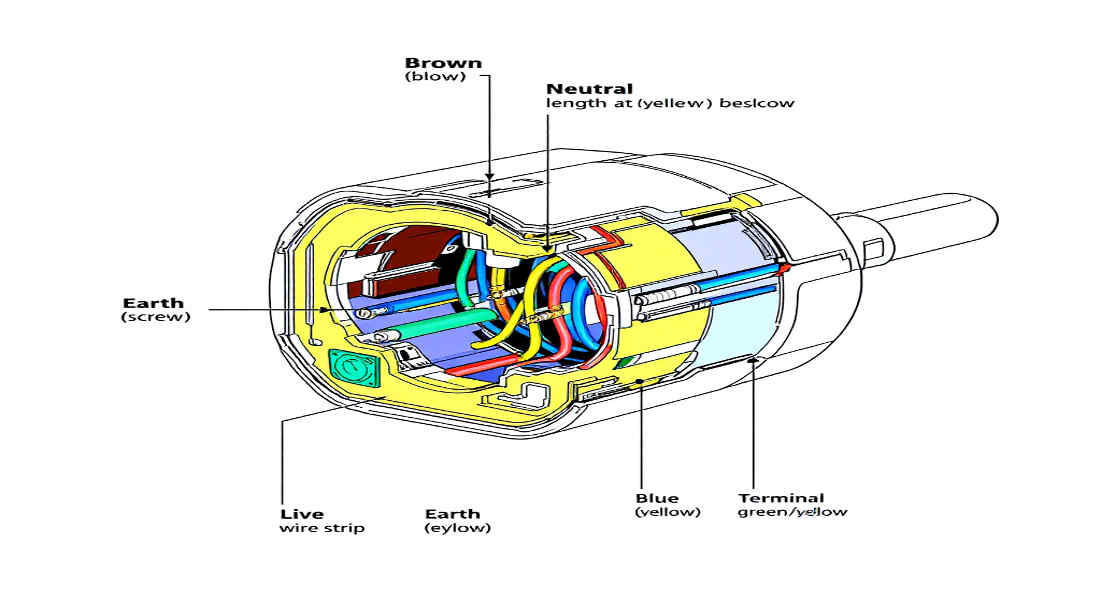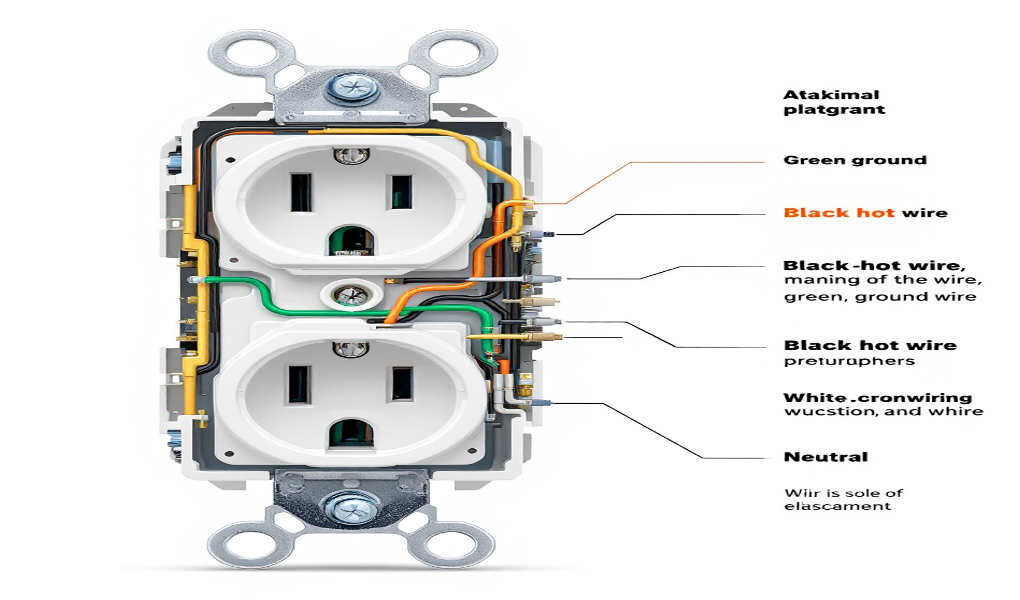Have you ever wondered how electricity flows throughout your home or how your plugs and outlets work? Understanding your home’s electrical wiring is not just a skill for electricians it’s a valuable knowledge set for homeowners and DIY enthusiasts. Whether you’re troubleshooting a faulty outlet, considering a small DIY project, or simply curious about how electricity powers your devices, grasping the basics of home wiring can help you maintain a safer and more efficient home.
Basics of Home Electrical Wiring
What Is Home Electrical Wiring?
Home electrical wiring refers to the network of wires, circuits, and components that deliver electricity from the power grid to various parts of your home. It’s a complex and organized system designed to safely distribute electricity to power appliances, lights, and devices.
How Electricity Enters Your Home
Electricity enters your home through the service panel, also known as the breaker box or fuse box. From here, electricity is distributed to various circuits, each of which powers a specific area or group of appliances. These circuits are like highways, carrying electricity to outlets, switches, and fixtures throughout your home.
What Are Circuits?
A circuit is a closed loop that allows electricity to flow. In a home, circuits are designed to handle specific loads, such as lighting, outlets, or larger appliances like stoves. Each circuit is protected by a circuit breaker or fuse, which prevents overloading and potential hazards.
The National Electrical Code (NEC)
The National Electrical Code (NEC) sets the safety standards for electrical wiring in the United States. It ensures systems are installed correctly to prevent fire hazards, shocks, and other risks. Always consult the NEC or a licensed electrician if you’re unsure about wiring standards in your area.
Components of Home Electrical Wiring
To understand how house plugs are wired, you first need to familiarize yourself with the components of home wiring.
You may also read (flooring solutions for your home).
Types of Wires
There are three main types of wires in most home electrical systems, and each serves a specific purpose:
- Hot Wire: Typically black or red, this wire carries current from the power source to the outlet or appliance.
- Neutral Wire: Usually white, this wire returns the current to the electrical panel and completes the circuit.
- Ground Wire: Bare or green, this wire provides a safety path for electricity in case of a fault or surge.
Wire Materials
The most common materials used for wiring are copper and aluminum.
- Copper wires are more conductive and durable, making them the preferred choice for most residential wiring.
- Aluminum wires are less expensive but can be prone to overheating without proper installation.
Wire Gauge
The gauge of a wire refers to its thickness, and it’s a critical factor in determining its capacity to carry electrical current. Lower gauge numbers (e.g., 12-gauge) indicate thicker wires, which can handle higher currents. Using the wrong wire gauge can lead to overheating and fire risks.
Understanding House Plugs and Outlets
Now that you understand the basic components, let’s zoom in on house plugs and outlets — the key connection points where you access electricity.
What Is a House Plug?
A house plug, or electrical outlet, is the point where you plug in your devices to access electricity. It connects to the home’s wiring system and allows electricity to flow to your appliances.
Components of an Electrical Plug
A standard outlet has three main components:
- Live (Hot) Prong: Connected to the hot wire, this prong delivers electricity.
- Neutral Prong: Connected to the neutral wire, it completes the circuit.
- Ground Prong: Connected to the ground wire, it provides a safety mechanism to prevent shocks.
Two-Prong vs. Three-Prong Plugs
- Two-Prong Plugs: Older outlets often lack a ground prong, making them less safe.
- Three-Prong Plugs: Modern outlets include a ground prong for added safety, reducing the risk of electric shock.
You may also read (wide plank engineered flooring).
How Are House Plugs Wired?
This is the section where we’ll answer the focus question: How are house plugs wired? Wiring a house plug may sound intimidating, but with the right guidance and safety precautions, it’s manageable for most DIY enthusiasts.
Step-by-Step Guide to Wiring an Outlet
- Turn Off the Power:
- Always switch off the power at the circuit breaker before working on any electrical wiring.
- Connect the Hot Wire (Black):
- Attach the black wire to the brass-colored screw on the outlet. This wire carries electricity to the outlet.
- Connect the Neutral Wire (White):
- Attach the white wire to the silver-colored screw. This wire completes the circuit.
- Connect the Ground Wire (Green or Bare):
- Attach the ground wire to the green screw. This wire ensures safety by redirecting excess electricity.
- Wrap Wires Clockwise:
- Wrap the wires clockwise around the screws to ensure a secure connection when tightening.
- Use Pigtail Wires if Necessary:
- If multiple cables are present in the box, use pigtail wires to connect them properly.
- Secure and Test:
- Screw the outlet into place, restore power, and test the outlet using a voltage tester.
Outlet Orientation
Should the ground slot face up or down? While there’s no universal rule, many electricians recommend the ground slot facing up for added safety. This prevents objects from falling into the live and neutral slots.
Types of Electrical Circuits in a Home
Branch Circuits
These are the most common circuits, powering outlets, and lighting. They typically use 120 volts and 15-amp breakers.
Small-Appliance Circuits
Designed for kitchen and bathroom outlets, these circuits handle higher loads with 20-amp breakers.
Dedicated Circuits
Larger appliances like stoves and dryers require dedicated circuits with 240 volts and thicker wires.
Safety Tips and Best Practices for Wiring House Plugs
- Turn Off Power: Never work on wiring without shutting off the circuit breaker.
- Use Proper Tools: Invest in insulated tools and voltage testers for safety.
- Match Wire Gauge: Always use the correct wire gauge for the circuit.
- When in Doubt, Call a Pro: If you’re unsure, hire a licensed electrician.
Troubleshooting Common Issues
- Loose Connections: Tighten screws and check wires for secure connections.
- Breaker Trips: Check for overloaded circuits or faulty appliances.
- Faulty Grounding: Test the outlet using a plug tester to ensure proper grounding.
Upgrading and Maintaining Your Home’s Electrical Wiring
- Install GFCI Outlets: These outlets prevent shocks in wet areas like kitchens and bathrooms.
- Upgrade Old Wiring: Replace outdated wiring to meet modern standards.
- Regular Inspections: Inspect your wiring every few years to ensure safety and compliance.
You may also read (fold the home sunshade).




